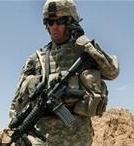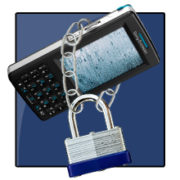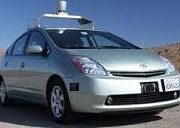 The Department of Defense is determined to field mobile devices that connect soldiers to networks for the rapid transmission of data. A number of forces have inspired this initiative:
The Department of Defense is determined to field mobile devices that connect soldiers to networks for the rapid transmission of data. A number of forces have inspired this initiative:
- Younger soldiers, by their own volition, are using their own smartphones and tablets whenever possible.
- The doctrine of network-centric warfare has upended the traditional paradigm of sending ISR to the rear echelons and is instead emphasizing delivering real-time info to the front lines.
- Enemy forces have successfully used cell phones to relay information in their own networks.
The military is openly envious of the commercial sector’s capability to institute rapid technological change. They want to exploit this capability in their drive to equip soldiers with smartphones, by utilizing COTS as much as possible.
This is a stunning reversal in the tradition of applying military technology toward civilian purposes. Computers, the internet, and mobile unmanned systems are just a few of the technical innovations that were originally developed for military purposes.
The role reversal of the military adopting civilian technology is not without its challenges. For example, the Department of Defense wants the creativity and versatility of open-platform software and hardware. However, their flexibility and accessibility have raised concerns about security breaches. On the other hand, closely guarded proprietary systems, such as iPhones, can also cause problems, because of their lack of adaptability to security programs.
For the moment, the ARMY has chosen to use Android operating system to run its Joint Battle Command-Platform (JBCP), the first “smartphone” to be tested. The “smartphone” is in quotations, because there are reports that the JBCP weighs 2 pounds. Since when do smartphones weigh 2 pounds? In addition, it is far from clear what kind of mobile devices will be eventually fielded.
Connecting Soldiers to Digital Applications (CSDA) is considering a variety of hardware options including tablets and handheld projectors (Army marches smart phones, apps to the battlefield). PDAs are not out of the question, with some arguing that their encryption abilities are superior to smartphones. Also, the line between the steadily shrinking “PDA” and the increasingly powerful “smartphone” is becoming progressively blurred.
The ARMY’s future “smartphone” may not even be a handheld. The military has spent 20 years developing wearable computers. Originally called Land Warrior, then renamed Ground Soldier System, the currently titled Nett Warrior program has shifted its focus to smartphones. Considering the ARMY’s determination to remain flexible, as well as the enormous amount of time and money invested in a wearable system, it is conceivable that the battlefield net-enabled ensemble may live again.
The smartphone advocates within the military have always been clear that their primary mission was to create an interoperable environment for mobile applications, i.e. field a solution that accommodates multiple platforms. Despite the logistical desirability of standardization, it’s very possible that they will end up with an array of devices.
A mix of mobile solutions runs counter to the trend of concentrating functionality into a single platform. After all, one of the smartphone’s most appealing features is that it functions as a camera, GPS, computer, navigation system, radio, microphone, etc. Besides, warfighters sometimes carry as much as 130 pounds; they don’t need an additional grab bag of tablets, handheld projectors, and other devices.
So what will the future bring? A one-size-fits-all smartphone or a variety of mobile devices matched to each application? I suspect that the ARMY and other armed forces will try to have it both ways. Mobile communication form factors other than the smartphone will be deployed, but their number will be limited in order to maximize logistical resources. Solutions will be chosen not only for their interoperability, but for their ability to adapt to multiple applications.







